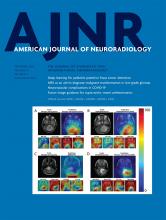Abstract
SUMMARY: Tumor resection followed by chemoradiation remains the current criterion standard treatment for high-grade gliomas. Regardless of aggressive treatment, tumor recurrence and radiation necrosis are 2 different outcomes. Differentiation of tumor recurrence from radiation necrosis remains a critical problem in these patients because of considerable overlap in clinical and imaging presentations. Contrast-enhanced MR imaging is the universal imaging technique for diagnosis, treatment evaluation, and detection of recurrence of high-grade gliomas. PWI and PET with novel radiotracers have an evolving role for monitoring treatment response in high-grade gliomas. In the literature, there is no clear consensus on the superiority of either technique or their complementary information. This review aims to elucidate the diagnostic performance of individual and combined use of functional (PWI) and metabolic (PET) imaging modalities to distinguish recurrence from posttreatment changes in gliomas.
ABBREVIATIONS:
- AAT
- amino acid tracer
- ASL
- arterial spin-labeling
- AUC
- area under the curve
- 11C-MET
- 11C-methionine
- DCE
- dynamic contrast-enhanced
- FDOPA
- 6-[18F]fluoro-L-dopa
- FET
- [18F]fluoroethyl-L-tyrosine
- FLT
- 18F-fluorothymidine
- HGG
- high-grade glioma
- Ktrans
- volume transfer constant
- rCBV
- relative cerebral blood volume
- RN
- radiation necrosis
- TBR
- tumor-to-background ratio
- TR
- tumor recurrence
- Ve
- volume of tissue
- Vp
- plasma volume
- © 2020 by American Journal of Neuroradiology
Indicates open access to non-subscribers at www.ajnr.org












